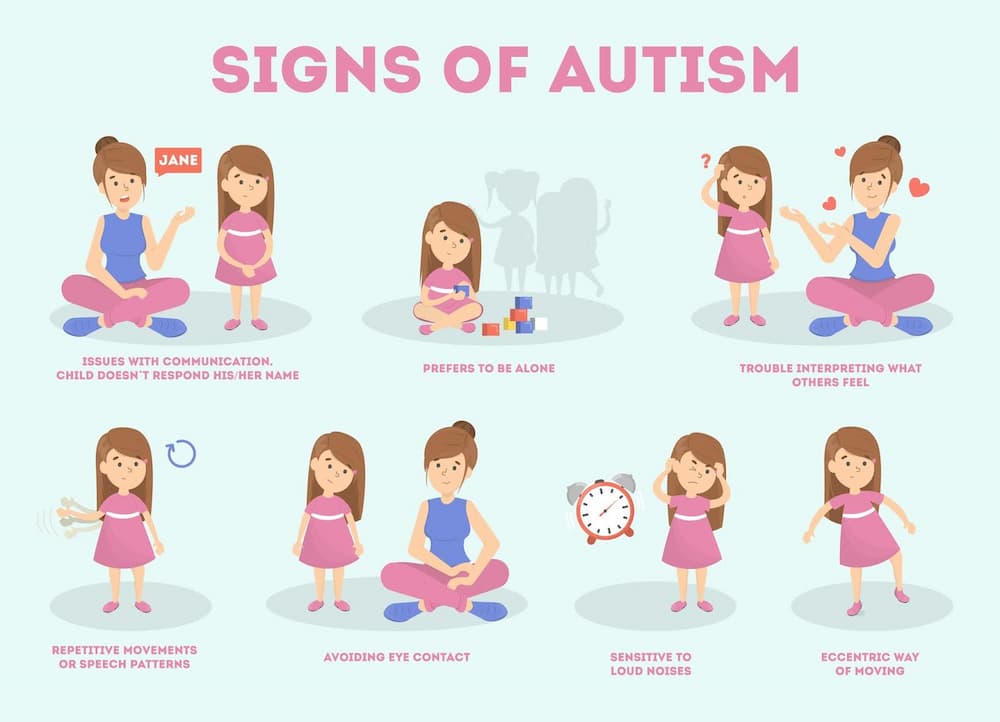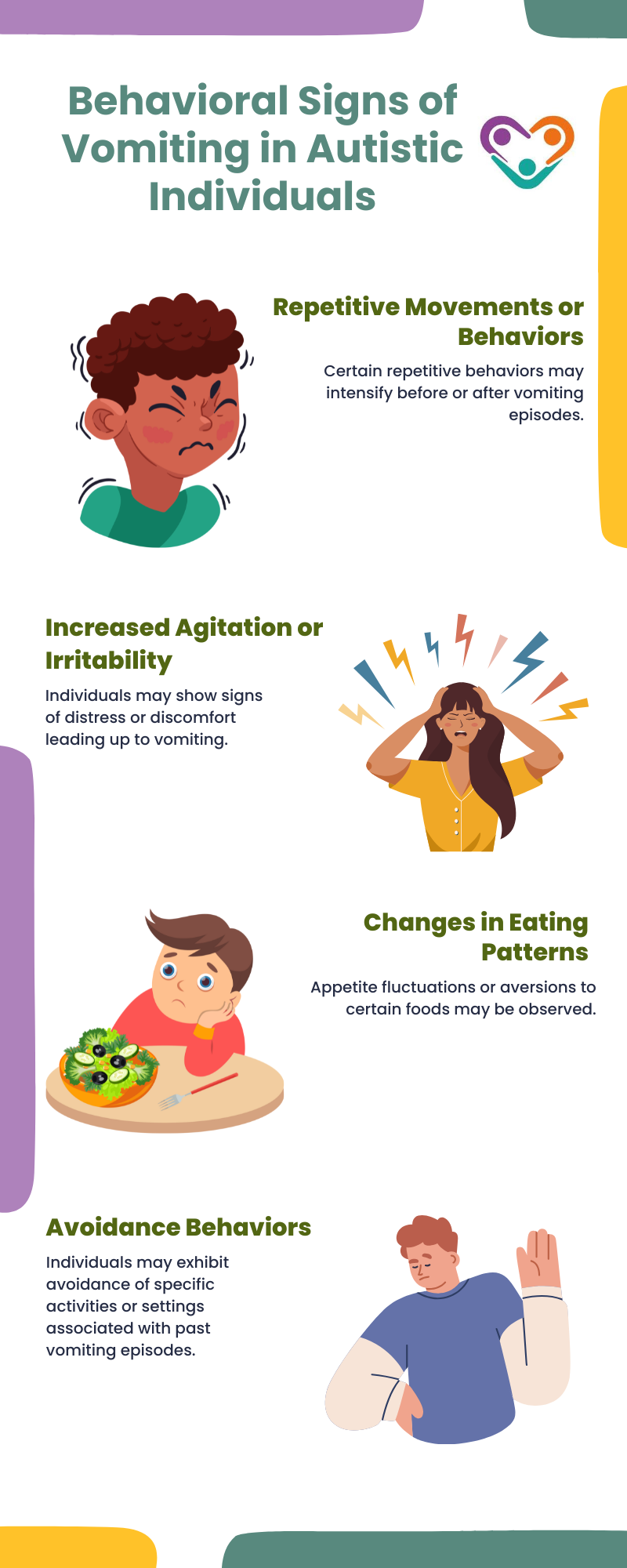Coping with hypersensory challenges with support from Autism Spectrum Therapies
Coping with hypersensory challenges with support from Autism Spectrum Therapies
Blog Article
Understanding the Impact of Behavioral Autism on Daily Life and Social Communications
You might not understand how deeply behavior autism influences every day life and social interactions. Individuals on the spectrum frequently browse a globe loaded with interaction hurdles and sensory overload. These challenges can cause aggravation and isolation, influencing their connections and general wellness. Understanding these subtleties is necessary for cultivating encouraging environments. What approaches can we implement to develop even more significant links and comprehensive rooms? The solutions may shock you.
Specifying Behavior Autism and Its Attributes
Behavioral autism, typically described as autism range disorder (ASD), incorporates a variety of conditions characterized by obstacles in social communication, interaction, and repeated behaviors. You might see that individuals with ASD often battle to interpret social signs, which can lead to misconceptions in discussions. They might locate it tough to develop eye get in touch with or participate in tiny talk, making social situations feel frustrating.
Interaction problems can materialize in numerous methods, from delayed speech development to a choice for utilizing fewer words. By recognizing these attributes, you can cultivate an environment that advertises acceptance and encourages efficient interaction, assisting people with autism prosper in their daily interactions.
The Spectrum of Autism: Recognizing Irregularity in Actions
Autism spectrum condition (ASD) isn't a one-size-fits-all medical diagnosis; it differs widely among individuals. You may see that some people with ASD display light signs and symptoms, while others might encounter much more considerable obstacles. This irregularity can materialize in habits, rate of interests, and sensory sensitivities. You might run into people who are highly spoken and involve conveniently in discussions, while others may prefer solitary tasks or communicate non-verbally.
Furthermore, the method individuals with ASD react to sensory input can differ substantially; some could be bewildered by loud sounds or intense lights, whereas others flourish in boosting settings. The spectrum likewise consists of differences in social interactions; some individuals may struggle to interpret social cues, while others navigate social settings with family member ease. Comprehending this irregularity is important, as it assists you appreciate each individual's one-of-a-kind experience and tailor support to their specific needs, fostering a much more comprehensive environment for everyone.
Communication Challenges Faced by People With Autism
When you connect with individuals on the autism range, you may see their one-of-a-kind interaction obstacles. They usually face difficulties with both verbal and nonverbal hints, which can influence their social interactions. Understanding these barriers is necessary for fostering much better links and assistance.

Verbal Interaction Difficulties
Many individuals on the autism range experience verbal interaction problems that can significantly influence their everyday communications. Your tone, quantity, or rate might not align with social expectations, creating others to misunderstand your purposes. Identifying these challenges can help you and your support network establish strategies to improve communication and foster far better links with others in your daily life.
Nonverbal Communication Obstacles
Spoken communication isn't the only difficulty individuals on the autism range face; nonverbal interaction obstacles can be simply as considerable. These challenges can lead to misconceptions or misconceptions of social signs, making interactions feel frustrating or complicated. By attending to nonverbal communication, you can find methods to boost your social experiences and enhance your general high quality of life.
Social Interaction Effects
Social interactions can usually feel overwhelming due to the one-of-a-kind communication obstacles faced by individuals with autism. You could deal with interpreting social signs, making it tough to comprehend sarcasm or body movement. This can cause misconceptions or unpleasant minutes in conversations. Additionally, launching and maintaining discussions may really feel challenging, causing anxiousness in social situations. You may prefer structured settings, making spontaneous interactions awkward. It's additionally typical to experience difficulty in engaging in little talk, which can impede creating brand-new friendships. Recognizing these challenges can aid you locate methods to enhance communication, such as practicing social abilities in safe setups or utilizing aesthetic help - Autism Spectrum Therapies. Comprehending your requirements enables you to browse social communications with better confidence and convenience.
Social Communication and Connection Structure in Autism
While structure relationships can be testing for people with autism, understanding their distinct viewpoints and interaction designs can promote significant connections. You might see that lots of individuals on the range choose direct interaction and may battle with social hints or small talk. By being uncomplicated in your communications, you can help create an atmosphere where they really feel comfortable.
Involving in shared passions can also offer as a bridge to deeper links. Whether it's a pastime, a favored program, or a mutual passion, these common strings can open up doors to relationship.
Daily Life Regimen: Browsing Methods and obstacles
Steering everyday life regimens can be especially challenging look at this site for people with autism, specifically when unexpected modifications occur. To navigate these obstacles, take into consideration carrying out visual timetables or checklists.
Establishing a routine that consists of sensory breaks can also be beneficial. You can prepare time-outs throughout your day to charge. It's vital to connect with those around you, letting them understand your choices and demands. This helps develop an understanding atmosphere.
Finally, method mindfulness strategies to take care of tension and anxiety. Basic breathing exercises or basing techniques can make a significant difference. By integrating these strategies, you can improve your day-to-day routine and minimize disturbances, making life feel much more manageable.
Staminas and Capacities of People on the Autism Range
Comprehending day-to-day live regimens is simply one aspect of the autism experience. Numerous people on the autism range possess exceptional toughness and capabilities that set them apart. You might find that your interest to information is exceptional, permitting you to succeed in tasks that call for accuracy and emphasis. Your ability to believe outside the box can cause ingenious remedies in numerous circumstances.
Furthermore, your memory skills typically beam, specifically in areas of interest. Aba Therapist Near Me. This propensity for maintaining details can make you a valuable source in areas like art, innovation, or science. You may also display solid visual reasoning, allowing you to visualize complex concepts and address troubles artistically
Additionally, your unique point of view on the world can promote compassion and understanding in others, enhancing social communications. Accepting these strengths not just enhances your self-confidence but additionally aids others value the varied skills you give the table.
Developing Comprehensive Settings for Individuals With Autism
Producing comprehensive atmospheres for individuals with autism begins with developing sensory-friendly spaces that provide to their special needs. You can additionally foster possibilities for social communication, helping to develop links and relationships. By making these changes, you'll add to a more welcoming atmosphere for everybody.
Creating Sensory-Friendly Spaces
While creating sensory-friendly spaces, it's essential to reflect on the special requirements of individuals link with autism. Beginning by selecting relaxing colors and soft lighting to develop a soothing setting. Include peaceful zones where individuals can pull away and reenergize when bewildered. You'll intend to decrease loud noises and disturbances, utilizing soundproof materials or white sound machines to help keep harmony. Think about tactile components like soft fabrics or fidget-friendly things that can give convenience. Ascertain that spaces are flexible, enabling for easy reformation to accommodate various tasks. Finally, include visual schedules or clear signage to help people browse the area confidently. By attentively incorporating these aspects, you can create a welcoming environment that supports sensory demands and advertises overall wellness.
Promoting Social Communication Opportunities
Designing sensory-friendly areas not only addresses individual convenience but additionally sets the phase for meaningful social interactions among individuals with autism. To promote these interactions, create comprehensive atmospheres that invite participation. Arrange structured tasks, like art courses or group games, that encourage partnership without frustrating sensory input. Usage visual help and clear communication to help every person engage conveniently. Encourage peer mentoring, matching individuals with autism with supportive peers that can direct them via social scenarios. In addition, take into consideration holding routine community occasions that commemorate neurodiversity, fostering approval and understanding among all individuals. By implementing these approaches, you can enhance social possibilities, aiding people with autism develop friendships and reinforce their social abilities in a secure, welcoming environment.

Often Asked Questions
Just How Can Pals Support Somebody With Behavioral Autism?
You can support a buddy with behavior autism by holding over at this website your horses, paying attention actively, and appreciating their boundaries. Participate in tasks they enjoy, connect openly, and develop a comfy environment where they really feel valued and understood.
What Resources Are Readily Available for Parents of Kid With Autism?
You can explore different sources for moms and dads of youngsters with autism, including assistance teams, academic web sites, and regional area solutions. Getting in touch with various other parents can likewise supply useful insights and shared experiences to help navigate obstacles.
Can Behavioral Autism Change In Time?

Yes, behavioral autism can change in time. You may see shifts in communication, social skills, and habits as your child grows. Early treatment and support frequently play important duties in these developing changes.
Exactly How Do Sensory Level Of Sensitivities Affect Day-to-day Live?
Sensory level of sensitivities can make everyday experiences frustrating. You may have problem with intense lights or loud sounds, bring about stress or evasion. Locating settings that fit your requirements can significantly improve your convenience and general every day life.
What Are Typical Misconceptions Concerning Behavioral Autism?
You may assume behavioral autism just impacts communication abilities, however it's even more facility. Lots of presume people lack empathy or intelligence, which isn't true. Recognizing these misunderstandings assists foster acceptance and assistance for those on the spectrum.
Behavioral autism, frequently referred to as autism spectrum disorder (ASD), incorporates an array of problems identified by difficulties in social interaction, communication, and repetitive behaviors.Social interactions can usually feel overwhelming due to the distinct communication obstacles dealt with by individuals with autism.Designing sensory-friendly spaces not only addresses private convenience however likewise sets the phase for significant social interactions among people with autism. Encourage peer mentoring, coupling people with autism with encouraging peers that can direct them with social situations. By applying these approaches, you can enhance social chances, assisting people with autism develop friendships and reinforce their social skills in a risk-free, welcoming environment.
Report this page